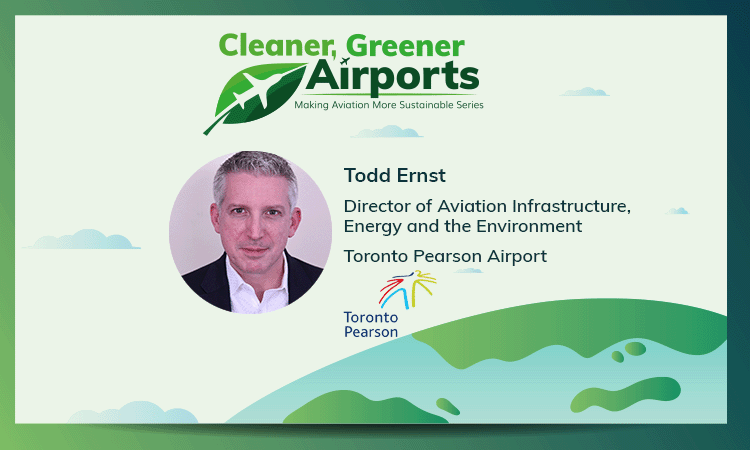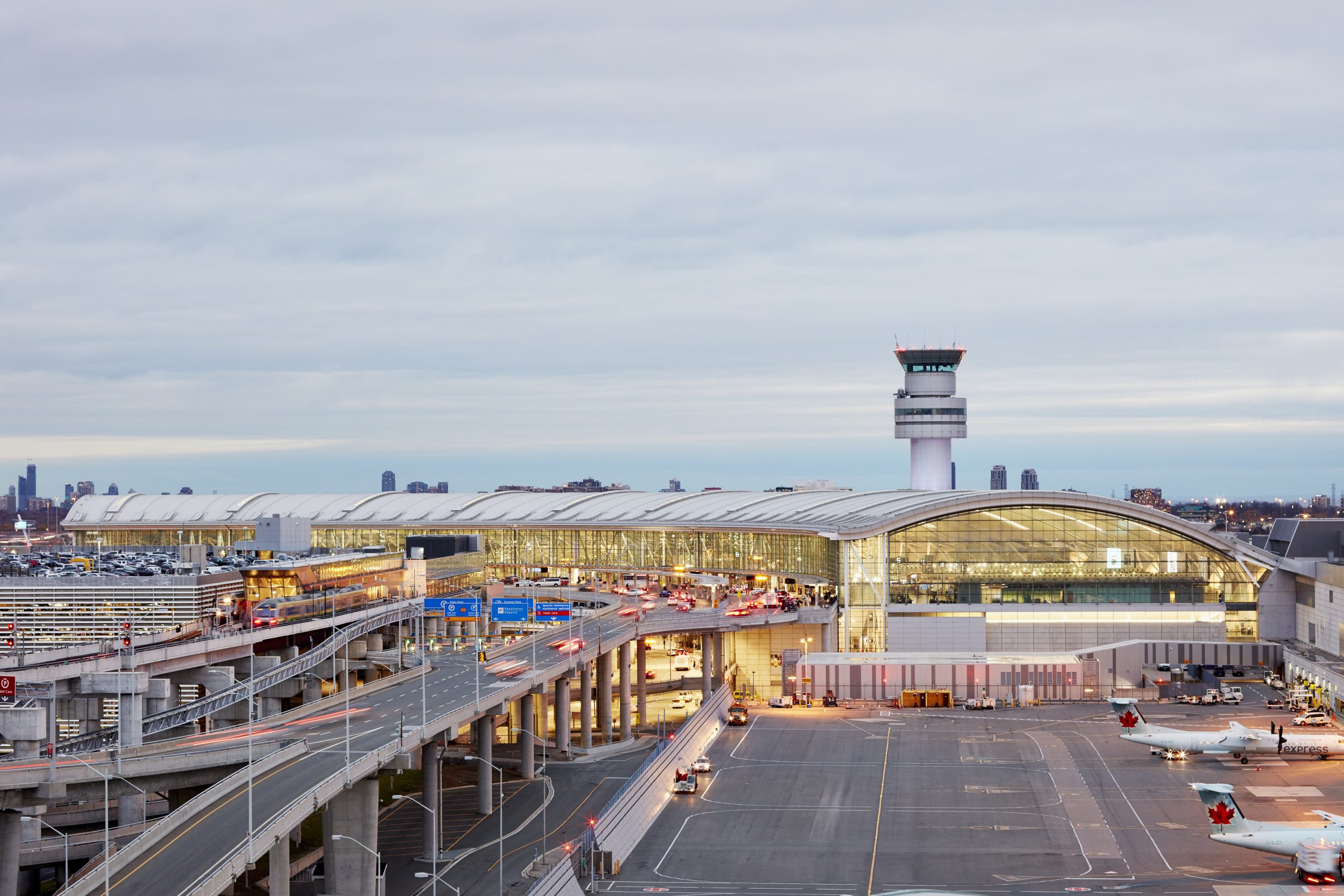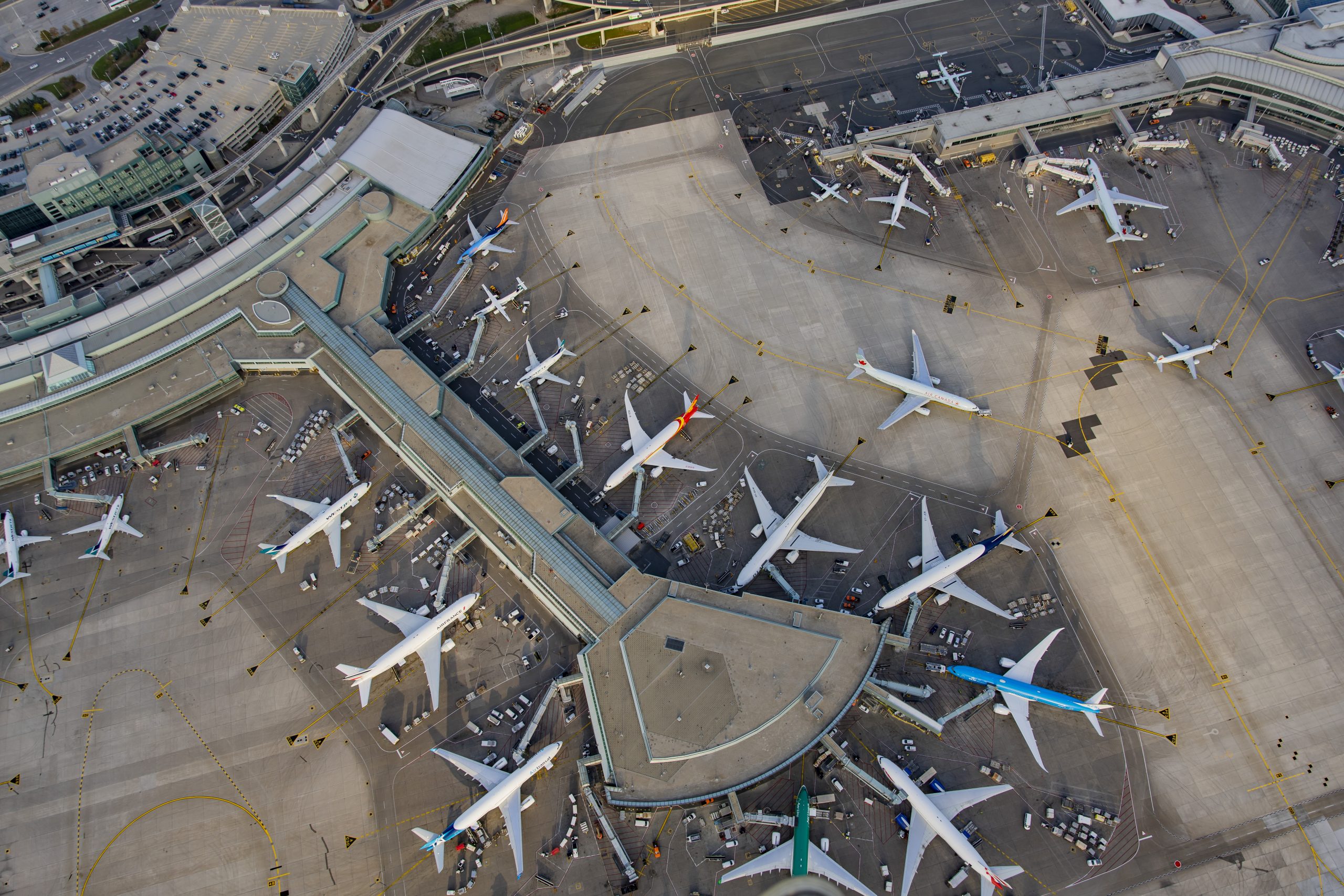Cleaner, Greener Airports: Making Aviation More Sustainable – Toronto Pearson International Airport
- Like
- Digg
- Del
- Tumblr
- VKontakte
- Buffer
- Love This
- Odnoklassniki
- Meneame
- Blogger
- Amazon
- Yahoo Mail
- Gmail
- AOL
- Newsvine
- HackerNews
- Evernote
- MySpace
- Mail.ru
- Viadeo
- Line
- Comments
- Yummly
- SMS
- Viber
- Telegram
- Subscribe
- Skype
- Facebook Messenger
- Kakao
- LiveJournal
- Yammer
- Edgar
- Fintel
- Mix
- Instapaper
- Copy Link
Posted: 3 December 2021 | Todd Ernst | 1 comment
Todd Ernst, Director of Aviation Infrastructure, Energy, and the Environment for Toronto Pearson Airport, explains how Canada’s largest airport has set clear targets for net zero emissions and net zero waste by 2050.


Like all airports around the world, traffic at Toronto Pearson Airport (YYZ) declined substantially due to the COVID-19 pandemic. But, before this crisis, demand for air travel in the region was on the rise, with 2019 seeing 50 million passengers pass through the airport for the first time. We are confident passenger volumes will rebound in the years to come, and just as we were prior to the COVID-19 pandemic, we are committed to our role as a steward of the environment. That includes reducing our environmental impact, even as we plan for an increase in demand for air connectivity.
Earlier this year (2021) we released a new Environmental Policy to guide our organisation’s environmental efforts. The policy is focused on seven key areas:
- Climate change resiliency: Taking the appropriate steps to be resilient to the risks of climate change, by assessing how climate change will create new, or alter current, climate-related risks; and mitigating those risks.
- Carbon neutrality and emissions: Reducing our emissions footprint, by improvement in operational efficiency and investment in projects for the direct reduction and/or offset of energy consumption and Greenhouse Gas (GHG) emissions to achieve Net Zero GHG by 2050.
- Strategic energy use: Ensuring the responsible use of energy throughout our business via energy conservation, improving energy efficiency and giving preference to renewable over non-renewable energy sources.
- Water management: Managing our water resources through water conservation efforts, water quality management, and addressing flood risk issues, thereby protecting the region’s water supplies.
- Natural environment: Minimising our impact on the natural resources around us by balancing the protection of plants and wildlife with aviation safety and supporting partnerships with the community to restore greenspaces.
- Waste management: Reducing or eliminating the use and generation of non-recyclable or non-compostable materials that are generated across operations and construction, by implementing programmes to achieve a net zero waste certification by 2050.
- Noise management: Reducing operational impacts on surrounding communities through a best-in-class noise management programme; focusing on the reduction of noise at source, land use planning and management, noise abatement operational procedures and operating restrictions.
How Toronto Pearson plans to achieve net zero goals
Key to the Environmental Policy, are the commitments to achieving net zero GHG emissions (from assets owned and controlled by the GTAA (Greater Toronto Airports Authority) — also known as scope 1 & 2 GHGs (Greenhouse Gas)), as well as net zero waste from airport terminal buildings by the year 2050.


Credit: Toronto Pearson Airport (YYZ)
Furthermore, the main initiatives to accomplish net zero emissions within our facilities include net zero GHG new construction, improving the energy efficiency of existing assets and leveraging renewable energy sources such as solar PV, solar thermal, and geothermal.
Some current initiatives aimed at reducing GHGs include electric boilers in our Terminal 1, chiller efficiency improvements, and the conversion to LED (Light Emitting Diode) lighting on our airfield. We are also looking closely at our on-site Cogen facility for alternatives, which may include use of clean fuels, replacement of the facility with clean electricity generation, or even whether we continue to have our own generation facility by 2050.
Supporting our airline partners transition to SAF
While our focus has traditionally been on GHGs that are within our control, such as from our terminal buildings and other assets, we are also looking to support the transition to Sustainable Aviation Fuels (SAF) for our airline partners. We are engaged in several SAF and clean flight technology working groups including the Deloitte SAF Working Group and the World Economic Forum’s Clean Skies initiative. We are a signatory to an ambition statement as part of that initiative, which aims to accelerate the supply and use of sustainable available fuel to reach 10 per cent of global jet aviation fuel supply by 2030.
We are a signatory to an ambition statement as part of that initiative, which aims to accelerate the supply and use of sustainable available fuel to reach 10 per cent of global jet aviation fuel supply by 2030″
We have also partnered with Air Canada, WestJet, and NAV Canada to explore Required Navigation Performance (RNP) – Arrivals and Continuous Descent Operation procedures being introduced at Pearson. Environmental benefits include a reduction in aircraft operation emissions due to fuel savings, as well as the potential to reduce noise for the community.
Turning to waste targets, Pearson has been focused on reducing waste from the terminals for many years and set a 72 per cent diversion rate target for 2020. The pandemic affected this target, as much of the waste that is most easily diverted from landfills comes from the food and beverage tenants in the terminals. With the sharp drop in passenger traffic, and closing of many restaurant and retail locations, there was a drop in food and beverage sales, affecting the amount of waste that could be diverted. The actual diversion rate for 2020 was 69 per cent as a result.


Credit: Toronto Pearson Airport (YYZ)
We fully believe that the recovery of the aviation industry from the COVID-19 pandemic will hinge on ‘greening’ of the industry”
Efforts to achieve net zero waste by 2050 include expanding on our existing ‘back-of-house’ organics programme, which focuses on the restaurants and caterers to also include passenger-facing organics recycling, pursuing new circular economy opportunities such as the Partners in Project Green material exchange, which helps local industries match waste products to become useful input materials at other organisations and improved procurement practices to minimise waste in purchased products and materials.
We fully believe that the recovery of the aviation industry from the COVID-19 pandemic will hinge on ‘greening’ of the industry. Following our Environmental Policy will allow us to plan for that recovery and aligns us with leading scientific thought and industry best practices and will position it as a steward of the environment.Going forward, we expect our zero waste targets to be helped along by the government of Canada’s ban on single use plastics, which comes into effect at the end of 2021. The ban includes plastic check-out bags, straws, stir sticks, six-pack rings, cutlery, and food ware made from hard to recycle plastics.
Todd Ernst is the Director Aviation Infrastructure, Energy & Environment at Toronto Pearson Airport. He is a senior business risk and sustainability professional, who has extensive experience with environmental policies aimed at combatting climate change. With diverse practical experience including environment, engineering, accounting, internal audit, and project management, Ernst has done substantial work in both industry and consulting with both public and private sector organisations.
Related topics
Airport development, Airside operations, Cleaner, Greener Airports: Making Aviation More Sustainable Series, COVID-19, Emissions, Noise abatement, Passenger experience and seamless travel, Retail, Sustainability, Sustainable Aviation Fuel (SAF), Sustainable development, Terminal operations



















YYZ’s commitment to net-zero Scope 1 and 2 emissions by 2050 is good, but weak compared to other Canadian airports (YVR is committed to net-zero by 2030). Also, Scope 3 emissions (emission from flights) make up the vast majority of emissions associated with airports. When will YYZ commit to concrete targets for reducing those emissions in tandem with airlines?